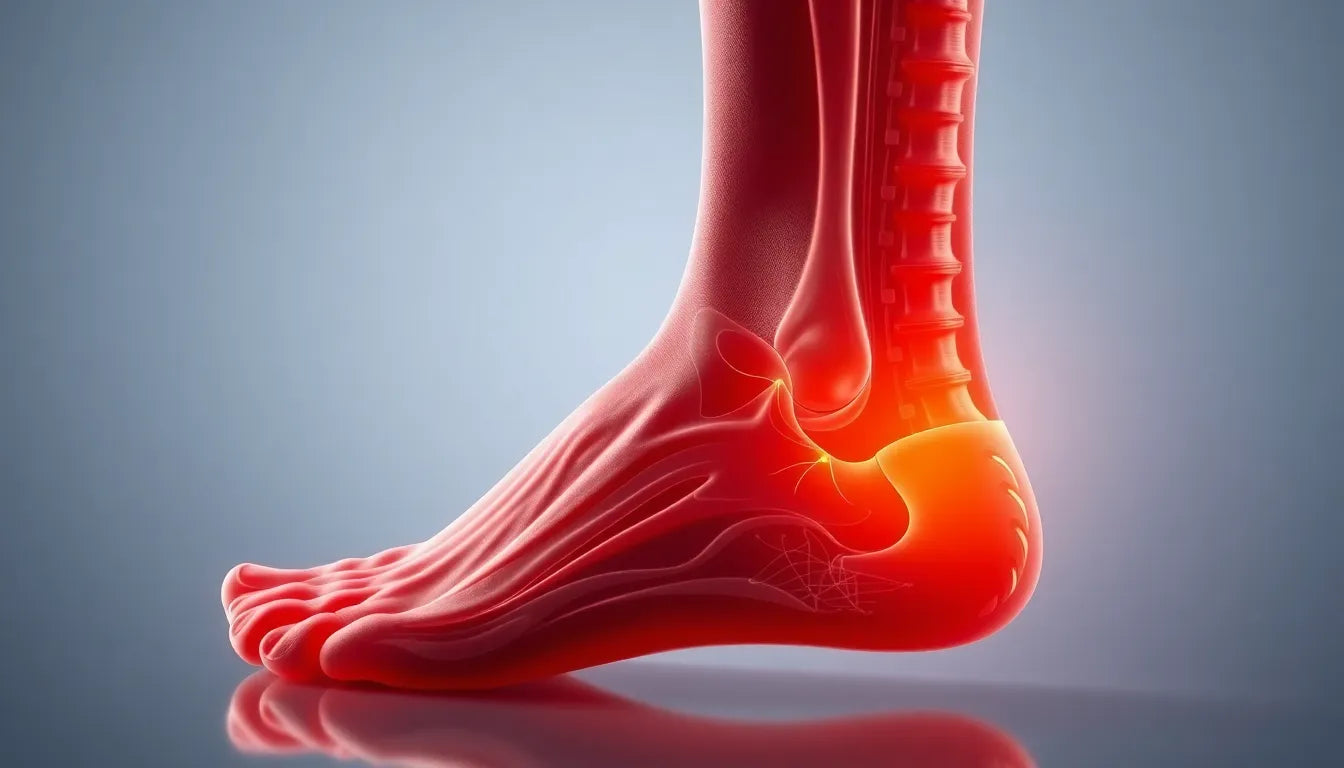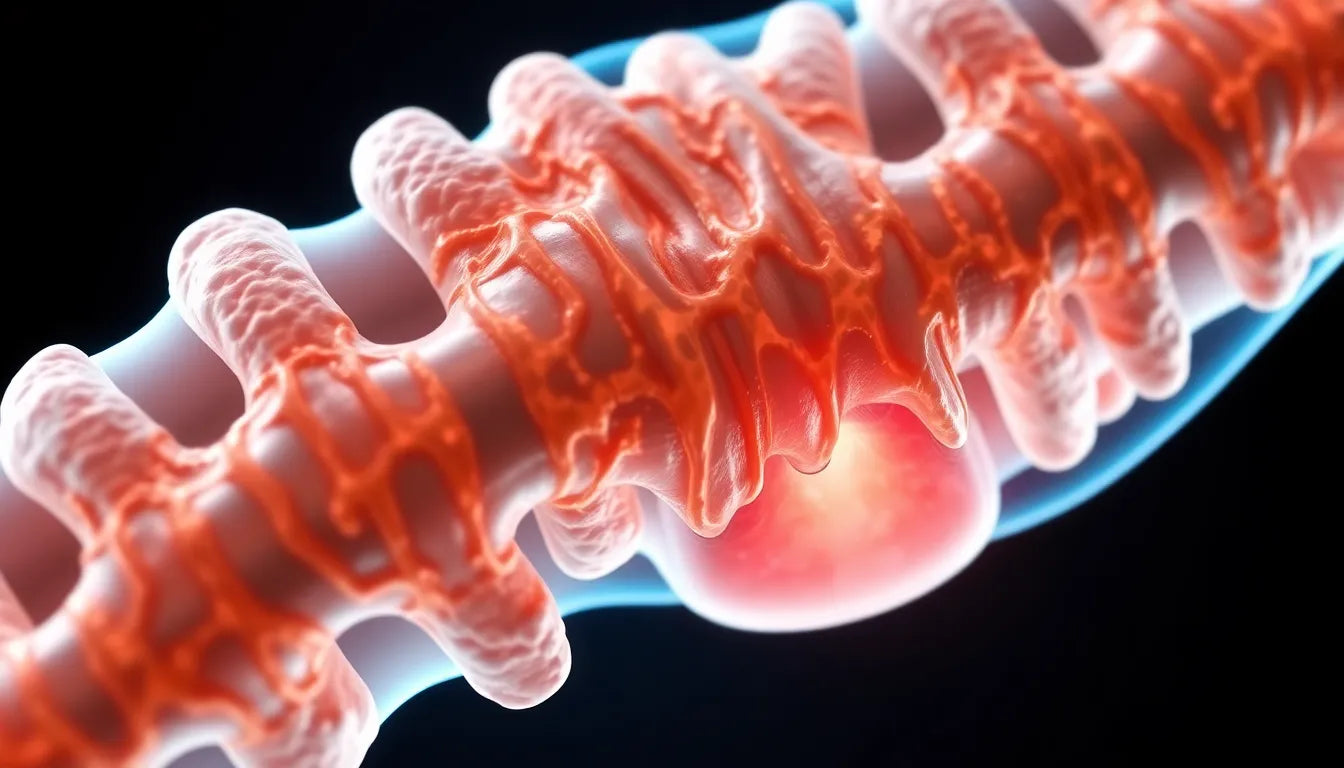Back pain is a ubiquitous issue that affects millions of people worldwide, often disrupting daily activities and diminishing quality of life. While many cases of back pain are benign and resolve on their own, some conditions, like a herniated disc, demand more attention. Understanding the nature of this condition is crucial, as it can significantly impact one's mobility and comfort if left unaddressed.
understanding a herniated disc
A herniated disc occurs when the soft, gel-like center of a spinal disc pushes through a tear in its tougher exterior. This can press on nearby nerves, leading to pain, numbness, or weakness in an arm or leg. The condition is commonly seen in the lumbar region (lower back), but it can also occur in the cervical spine (neck). Recognizing the symptoms early can be pivotal in managing the condition effectively, preventing further complications, and improving overall outcomes.
importance of early recognition
Identifying the signs of a herniated disc early on can make a significant difference in the management and treatment of the condition. Early intervention can alleviate symptoms, reduce the risk of chronic pain, and prevent the need for more invasive treatments like surgery. Understanding the symptoms and seeking timely medical advice can help maintain an active and pain-free lifestyle.
purpose of this guide
This article aims to equip readers with the knowledge to identify the signs of a herniated disc and understand the diagnostic process. By shedding light on this condition, we hope to empower individuals to take proactive steps towards their spinal health. Whether you're experiencing persistent back pain or curious about the potential causes, this guide will provide valuable insights into recognizing and addressing a herniated disc.
recognizing the symptoms of a herniated disc
Understanding the symptoms of a herniated disc is crucial for early detection and effective management. While back pain is a common ailment, specific symptoms can help differentiate a herniated disc from other types of back issues. The most prevalent sign is low back pain, which often serves as the first indicator. However, pain alone is not definitive, as it can be associated with various conditions.
One of the hallmark symptoms of a herniated disc is sciatica, characterized by pain that radiates down the leg. This occurs when the herniated disc presses on the sciatic nerve, causing discomfort that can range from mild to severe. Alongside sciatica, individuals may experience numbness or tingling in the leg or foot, which indicates nerve involvement. Muscle weakness in the affected area is another symptom that can impact mobility and daily activities.
In some cases, particularly when the herniated disc is in the cervical spine, pain may manifest in the arm or shoulder. This can be accompanied by difficulty with balance or walking, highlighting the diverse ways a herniated disc can affect the body. Recognizing these symptoms and understanding their implications can guide individuals in seeking timely medical attention.
diagnostic process for a herniated disc
Diagnosing a herniated disc involves a combination of medical history, physical examinations, and imaging tests. A thorough medical history helps healthcare providers understand the onset and progression of symptoms, while a physical examination can reveal signs of nerve compression. One common physical test is the straight leg raise test, which helps diagnose lumbar herniated discs by assessing nerve tension.
Imaging tests play a pivotal role in confirming a herniated disc diagnosis. MRI scans are often the preferred method, as they provide detailed images of the spinal discs and surrounding structures. CT scans can also be used to visualize the spine and identify any abnormalities. In some cases, additional tests like electromyogram and nerve conduction studies may be conducted to assess the extent of nerve damage.
By combining these diagnostic tools, healthcare professionals can accurately diagnose a herniated disc and develop an appropriate treatment plan. Early and accurate diagnosis is essential for managing symptoms and preventing further complications.
comparing symptoms: herniated disc vs. other back issues
To better understand the symptoms of a herniated disc, it's helpful to compare them with other common back issues. For instance, muscle strain often causes localized pain and stiffness but doesn't typically involve nerve symptoms like numbness or tingling. Arthritis, on the other hand, may cause joint pain and stiffness, but it usually doesn't lead to sciatica or muscle weakness.
Here's a simplified comparison:
| Condition | Common Symptoms |
|---|---|
| Herniated Disc | Low back pain, sciatica, numbness, tingling, muscle weakness |
| Muscle Strain | Localized pain, stiffness, muscle spasms |
| Arthritis | Joint pain, stiffness, swelling |
Understanding these differences can aid individuals in identifying the cause of their symptoms and seeking appropriate medical evaluation.
exploring treatment options for a herniated disc
Once a herniated disc has been diagnosed, understanding the available treatment options is crucial for effective management and recovery. Treatment generally starts with conservative methods, aiming to alleviate pain and improve mobility without invasive procedures.
conservative treatments
Initially, over-the-counter pain medications, such as ibuprofen or acetaminophen, can help reduce inflammation and manage pain. Physical therapy is another cornerstone of conservative treatment, focusing on exercises that strengthen and stabilize the spine, enhance flexibility, and reduce pressure on the affected disc. Lifestyle modifications, such as ergonomic adjustments at work or home, can also play a significant role in managing symptoms and preventing further injury.
surgical options
When conservative treatments do not provide sufficient relief, surgical intervention may be considered. Surgery is typically recommended if there is significant nerve compression leading to persistent pain, weakness, or loss of function. Common surgical procedures include microdiscectomy, where the herniated portion of the disc is removed, and laminectomy, which involves removing part of the vertebra to relieve pressure on the spinal cord or nerves.
the role of ergonomic aids in managing herniated disc symptoms
Ergonomic aids can be invaluable in managing symptoms of a herniated disc and preventing further injury. Products such as ergonomic chairs, cushions, and other supports can help maintain proper posture, reduce strain on the spine, and enhance comfort during daily activities. Anodyne offers a range of ergonomic solutions designed to support spinal health and improve quality of life for those dealing with back issues.
frequently asked questions
What are the first signs of a herniated disc?
The initial signs of a herniated disc often include back pain, sciatica, and numbness or tingling in the extremities. These symptoms can vary in intensity and may worsen with certain activities.
How is a herniated disc diagnosed?
A herniated disc is typically diagnosed through a combination of medical history review, physical examination, and imaging tests such as MRI or CT scans. These tools help healthcare providers assess the extent of disc herniation and its impact on surrounding structures.
Can a herniated disc heal on its own?
Many herniated discs improve with conservative treatment over time. However, the healing process can vary, and some cases may require surgical intervention if symptoms persist or worsen.
What lifestyle changes can help manage a herniated disc?
Incorporating ergonomic aids, maintaining a healthy weight, and engaging in regular exercise can help manage symptoms and prevent further injury. Additionally, avoiding activities that exacerbate pain and practicing good posture are essential for spinal health.
By understanding the symptoms, diagnostic processes, and treatment options for a herniated disc, individuals can take proactive steps towards managing their condition and improving their quality of life. Whether through conservative treatments, surgical options, or ergonomic aids, addressing a herniated disc effectively requires a comprehensive approach tailored to individual needs.


















